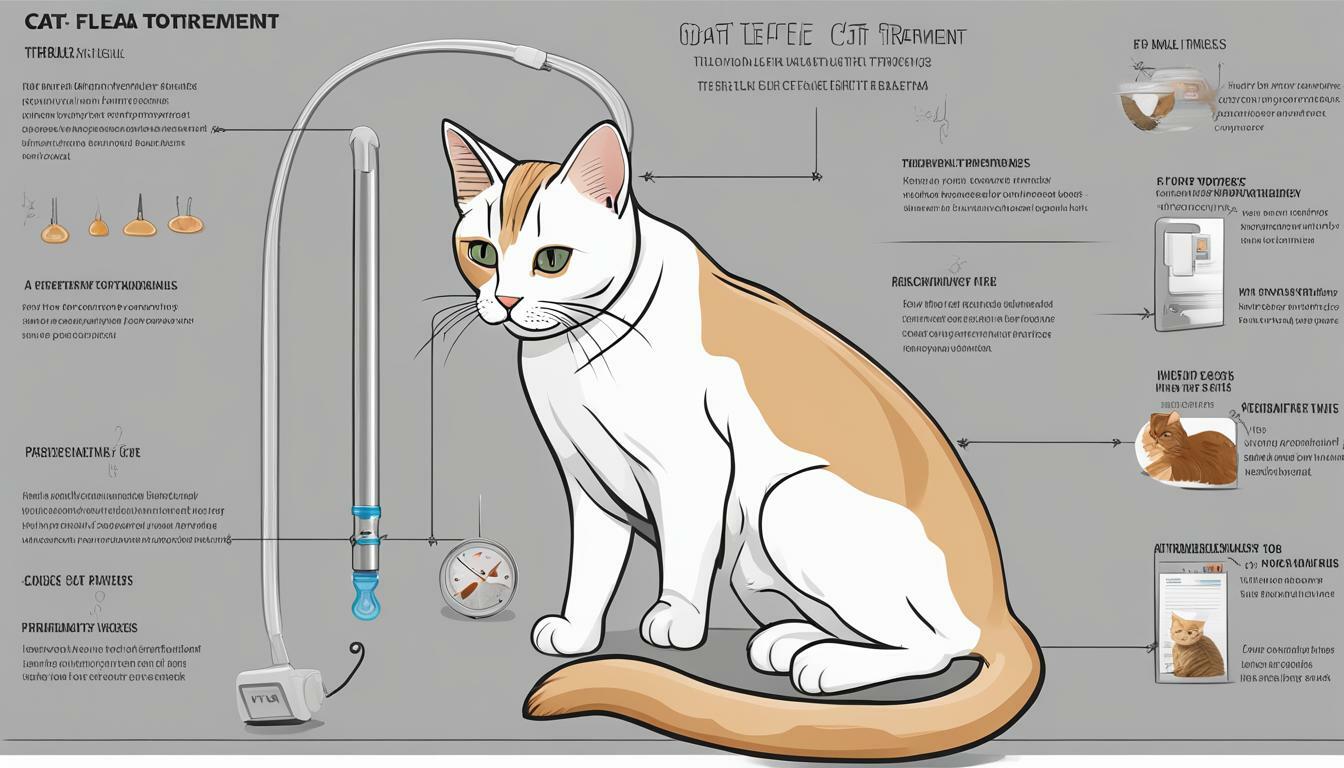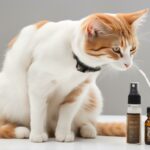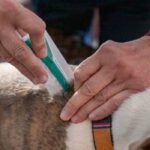
As a journalist specializing in pet care, one of the most common questions I receive from cat owners is how long it takes for flea treatment to work. The answer varies depending on the treatment method, the severity of the infestation, and the overall health of the cat. In this article, I will provide a comprehensive overview of the timeline for cat flea treatment to take effect and address common questions about flea treatment effectiveness.
Key Takeaways
- The timeline for cat flea treatment to work depends on the treatment method, severity of infestation, and cat’s health.
- Topical treatments, oral treatments, and flea collars are the most common types of cat flea treatments available.
- Flea infestation severity, cat’s health, and flea life cycle can all influence flea treatment effectiveness.
Understanding Cat Flea Treatment Methods
As a copywriting journalist, it’s important for me to explain the different methods of cat flea treatment available in the market. Understanding the treatment options will help pet owners make an informed decision about what is best for their cats. The three main types of flea treatment for cats are:
| Type of Treatment | How it Works | Effectiveness |
|---|---|---|
| Topical flea treatment | A liquid solution applied to the cat’s skin, typically at the base of the neck. | Very effective at killing fleas and preventing re-infestation for a month or longer. |
| Oral flea treatment | A pill that the cat ingests, which then circulates in their bloodstream to kill fleas. | Also very effective at killing fleas and preventing re-infestation for a month or longer. |
| Flea collars | A collar impregnated with flea-killing chemicals that is worn by the cat. | Effective at killing fleas for several months, but may not prevent re-infestation as well as topical or oral treatments. |
It’s essential to follow the instructions for each product carefully to ensure that the treatment is as effective as possible. In case of any confusion, pet owners can consult their veterinarian for guidance on selecting the most appropriate treatment for their cat.
Factors Influencing Flea Treatment Effectiveness
When it comes to treating cat fleas, there are several factors that can affect the effectiveness of the treatment. Understanding these factors can help pet owners make informed decisions about the best course of action for their cat.
Flea Infestation Severity
The severity of the flea infestation can impact the effectiveness of the treatment. If the infestation is extensive, it may take longer for the treatment to take effect, and multiple treatments may be necessary. It is essential to monitor the cat closely and seek veterinary assistance if necessary.
Cat’s Health
The overall health of the cat can also play a role in flea treatment effectiveness. Cats that are sick or immunocompromised may have a weaker response to flea treatments. Additionally, young or elderly cats may require different treatment methods and dosages. Therefore, it is important to consult a veterinarian to determine the best treatment plan for the cat’s specific health needs.
Flea Life Cycle
The flea life cycle is another critical factor to consider when treating cat fleas. Adult fleas are only a small part of the problem, as flea eggs and larvae can survive in the environment for months. Some flea treatments can only kill adult fleas and may not be effective against eggs or larvae. It is essential to choose a treatment method that targets different stages of the flea life cycle to prevent re-infestation.
Timeline for Topical Flea Treatment to Work
Topical flea treatments are a popular option for cat owners as they are easy to apply and fast-acting. However, it is important to understand the expected timeline for the treatment to work and its effectiveness. These treatments typically come in the form of a spot-on solution that is applied to the cat’s skin between the shoulder blades.
The timeline for topical flea treatment effectiveness can vary depending on the product and the severity of the flea infestation. Typically, it takes 12-24 hours for the treatment to start working, and fleas should be eliminated within 48-72 hours. It is important to note that some topical treatments may require multiple applications for complete flea elimination.
To ensure the topical flea treatment is effective, it is crucial to apply it correctly and according to the manufacturer’s instructions. The solution should be applied directly to the skin and not on the cat’s fur. It is also important to avoid bathing the cat for at least 48 hours after application, as this can reduce the treatment’s effectiveness.
Overall, topical flea treatments are a highly effective method of treating cat fleas, with fast-acting results typically seen within 24-72 hours. However, it is important to follow the recommended application instructions and continue to monitor the cat’s flea infestation to ensure complete elimination.
Timeline for Oral Flea Treatment to Work
When it comes to treating cat fleas, oral flea treatments are a popular option for many pet owners. These treatments come in the form of pills or chews that are ingested by the cat, and they work by releasing chemicals into the bloodstream that kill the fleas when they bite. But how long does it take for oral flea treatments to start working?
The timeline for oral flea treatment effectiveness can vary depending on the specific medication used and the severity of the flea infestation. Generally, it can take anywhere from a few hours to a few days for the medication to begin killing the fleas. However, it’s important to note that these treatments do not immediately eliminate all fleas, and it may take several days for the full effects to be seen.
Additionally, the duration of the oral flea treatment’s effectiveness can also vary. Some treatments may only last for a few days, while others can provide protection for up to a month. It’s important to follow the recommended dosage and frequency of the medication to ensure maximum effectiveness and protection against future infestations.
It’s also worth noting that certain factors can impact the effectiveness of oral flea treatments. These factors include the cat’s overall health and immune system, the severity of the infestation, and the life cycle of the fleas. Working with a veterinarian can help ensure the best possible outcome and personalized treatment plan for your cat.
In summary, oral flea treatments can be an effective way to treat cat fleas, but the timeline for their effectiveness can vary. It is recommended to follow the recommended dosage and frequency, and to consult with a veterinarian for personalized advice and treatment options.
Flea Collar Effectiveness and Duration
Flea collars are a popular form of cat flea treatment, but many pet owners wonder how effective they are and how long they last.
Flea collars typically work by releasing a pesticide that repels or kills fleas. The effectiveness of flea collars can vary depending on the brand and the active ingredient used. Some collars may only repel fleas, while others may kill them.
The duration of flea collar treatment can also vary. Some collars can last for up to eight months, while others may only last for a few weeks. It’s important to follow the manufacturer’s instructions carefully and replace the collar as recommended.
While flea collars can be effective, it’s important to note that they may not provide complete protection against fleas. In some cases, they may not be enough to treat severe flea infestations.
To maximize the effectiveness of flea collars, it’s important to use them in conjunction with other flea treatments and to follow proper application techniques. It’s also essential to keep your cat’s environment clean and to schedule regular vet check-ups to monitor their health and flea status.
Tips for Maximizing Flea Treatment Effectiveness
As a professional journalist, I have seen the devastating effects of flea infestations on cats. While flea treatment methods have come a long way, the best way to tackle a flea problem is to prevent it from happening in the first place. Here are some tips to help pet owners maximize the effectiveness of their cat flea treatment:
- Follow the instructions: It might seem obvious, but it’s crucial to follow the instructions on the flea treatment product label to achieve the best results. Improper application or dosage can affect the effectiveness of the treatment.
- Clean your home: Fleas can survive in carpets, bedding, and furniture. Vacuuming regularly and washing your cat’s bedding in hot water can help eliminate fleas from your home and decrease the likelihood of reinfestation.
- Use flea prevention products year-round: Even if your cat doesn’t go outside, they can still be exposed to fleas through contact with other animals or from people coming in and out of your home. Using flea prevention products year-round helps keep fleas at bay.
- Consult with your veterinarian: Your veterinarian can provide you with tailored advice on the best cat flea treatment methods for your feline friend. They can also advise you on suitable flea prevention products and give you tips on how to manage flea infestations.
- Be patient: Flea treatment can take time to work effectively. Don’t be discouraged if you don’t see an immediate improvement. It may take a few weeks before fleas are completely eradicated.
- Monitor your cat: Keep an eye on your cat’s behavior after administering flea treatment. If you notice any adverse effects, such as excessive scratching or lethargy, contact your veterinarian immediately.
By following these tips, pet owners can enhance the effectiveness of their cat flea treatment and provide their feline friends with the protection they need from flea infestations.
Conclusion
In conclusion, the timeline for cat flea treatment to take effect varies depending on the method used. Topical treatments can take between 12-24 hours to start killing fleas, while oral treatments can begin working within 30 minutes. Flea collars can take up to 24 hours to start working, but their effects can last for several months.
It is important to follow the recommended timeline for each treatment method and to consult a veterinarian for personalized advice. Factors such as the severity of the flea infestation, the cat’s overall health, and the flea life cycle can all influence treatment effectiveness.
To maximize the efficiency of flea treatment, pet owners should follow proper application techniques, manage their pet’s environment, and schedule regular vet check-ups. By taking these steps, pet owners can effectively protect their furry companions from the discomfort and potential health risks of flea infestations.
Cat Flea Treatment Timeline and Efficiency
Understanding the timeline and efficiency of cat flea treatment is crucial for pet owners in ensuring the health and comfort of their pets. By staying informed and following recommended practices, pet owners can effectively manage flea infestations and keep their cats healthy and happy.
FAQ
Q: How long does it take for cat flea treatment to work?
A: The timeline for cat flea treatment to take effect can vary depending on the method used. Topical treatments typically start killing fleas within 12 to 24 hours, while oral treatments may take a few hours to a day to begin working. Flea collars can take up to 24 hours to start killing fleas.
Q: What are the different types of cat flea treatments?
A: There are three main types of cat flea treatments: topical treatments, oral treatments, and flea collars. Topical treatments are applied directly to the cat’s skin, oral treatments are taken orally by the cat, and flea collars are worn around the cat’s neck.
Q: What factors can influence the effectiveness of flea treatments?
A: Several factors can affect the effectiveness of cat flea treatments. The severity of the flea infestation, the overall health of the cat, and the flea life cycle are all important considerations. It’s important to address these factors to ensure optimal results.
Q: How long does it take for topical flea treatments to work?
A: Topical flea treatments typically start killing fleas within 12 to 24 hours of application. It’s important to follow the instructions provided by the manufacturer and apply the treatment regularly as recommended by your veterinarian.
Q: How long does it take for oral flea treatments to work?
A: Oral flea treatments for cats usually begin killing fleas within a few hours to a day after administration. The effects of oral treatments may last for several weeks, providing long-lasting protection against fleas.
Q: How effective are flea collars and how long do they last?
A: Flea collars are an effective method of flea control for cats. They typically start working within 24 hours of application and can provide continuous protection for several months. Be sure to choose a flea collar specifically designed for cats and follow the instructions for proper use.
Q: What are some tips for maximizing flea treatment effectiveness?
A: To maximize the effectiveness of cat flea treatments, it’s important to follow proper application techniques, regularly clean and vacuum your home to remove flea eggs and larvae, and maintain good overall hygiene for your cat. Additionally, regular check-ups with a veterinarian can ensure that your cat’s flea treatment plan is optimized for their specific needs.
- Does Flea Treatment Kill Lice? - September 8, 2023
- Does Flea Treatment Kill Mites? - September 8, 2023
- How to Put Flea Treatment on a Dog? - September 8, 2023






